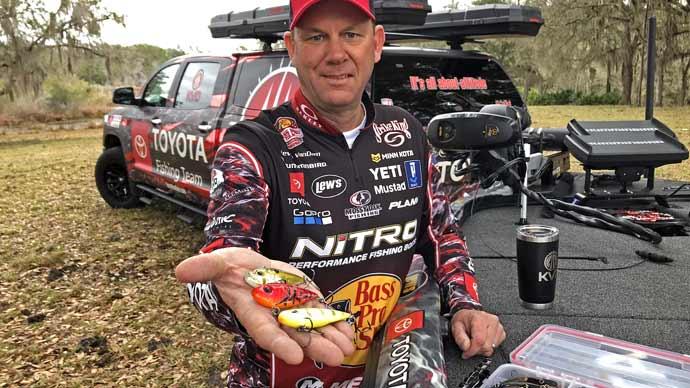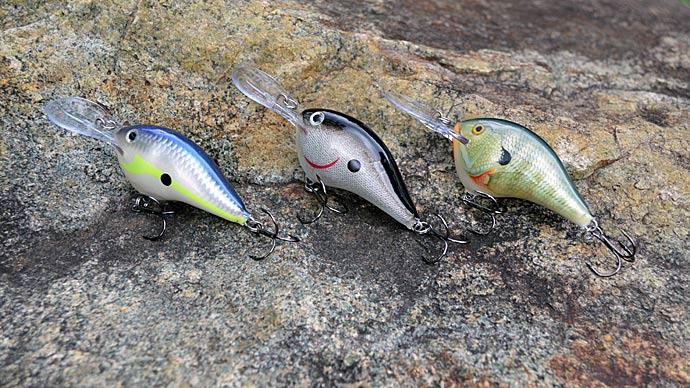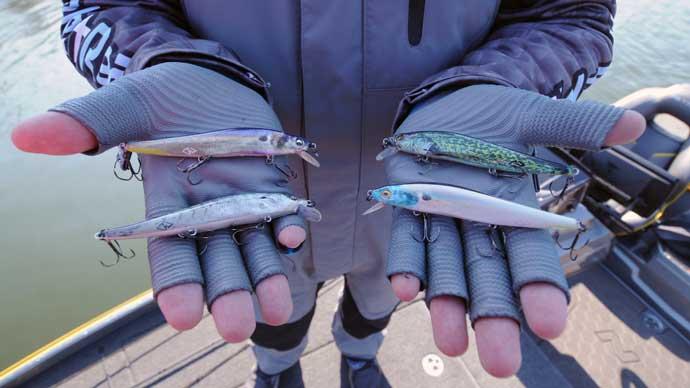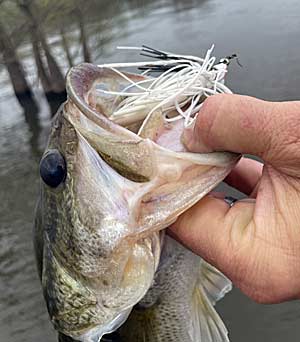
Fishing lures come in all shapes and sizes and even more colors. As a result, selecting the correct bait can sometimes be confusing, especially when picking the right color for the condition. Thankfully, it can be a lot simpler than some make it, and a handful of hues can cover just about every bass fishing situation involving soft plastics and hard baits.
Soft Plastics
When it comes to soft plastic worms, creatures, and others, one color is a clear favorite for bass anglers everywhere: green pumpkin. The old joke is that "color doesn't matter as long as it's green pumpkin," which holds everywhere. So if you were only to have one choice, this should be it.
Solid colors are the way to go for dirty water situations, and black or black and blue are two proven other colors that always produce and show up well in stained and muddy water. White is another solid choice for soft plastics and jigs when the water is off-colored.
When fishing in clear water, green pumpkin is excellent, and so is any watermelon shade. These natural colors are excellent when the fish can see the bait well, as are translucent colors, such as pinks and purples. Another excellent choice for clear water soft baits is solid black, as it shows up well and looks natural.
Hard Baits
Crankbaits, jerkbaits, and topwaters come in many different colors, but a handful are best sellers and work everywhere. The three most significant things to keep in mind are:
- Water color.
- The brightness of the sun.
- The forage in the waters you are fishing.
Colors for Topwaters and Jerkbaits
For highly visual baits like topwaters and jerkbaits, the color selection often comes down to the water clarity and sun conditions. Generally, solid colors like white or bone are the best choice for the most cloudy days or if the water is slightly dirty.
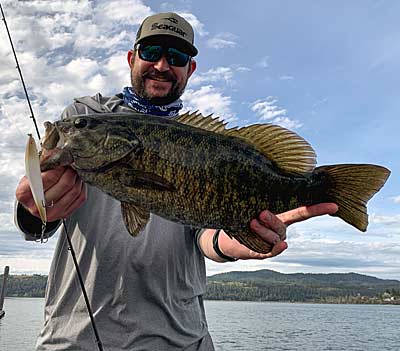
The solid white color is easy for the fish to see when the water is stained and creates a stark contrast to everything else, making it easy to locate.
For sunny days, flashy colors work well because the sunny skies help to reflect the colors and create a little extra flash and shine. Metallic colors like chrome are good choices for these conditions for both jerkbaits and topwaters.
When the water is exceptionally clear, translucent patterns are good because they appear natural to wary fish. Countless clear and transparent colors are great for clear water and help disguise the bait while attracting fish.
Crankbaits
The various styles of crankbaits are proven lures that catch fish on various lake types, and they are available in everything from super shallow divers to those that reach extreme depths. Keeping it simple with color selection is the best rule of thumb for all crankbaits, and the most significant consideration is water clarity.
Reds for Spring
Each spring, bass anglers reach for red-colored crankbaits and lipless baits for several reasons, but the biggest is how well they work. Spring is usually when the rain or melting snow brings an influx of runoff into the lakes and rivers and creates stained water. Red shows up very well in these situations, and bass can quickly locate a bright red bait.
Another reason that red is so popular and effective is because it imitates a favorite spring meal of bass: crawfish. As the water warms each year, crawfish begin to get more active, and bass are keyed on eating crawfish in shallow water, and that is why red baits are so helpful early in the year.
Matching the Hatch
The term "match the hatch" gets thrown around a lot in all fishing circles, but it applies to crankbait fishing, where imitating what the fish are eating is a great way to pick the perfect color.
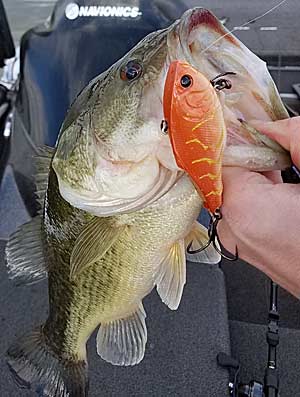
Like the reds mentioned above, it can be helpful to choose a color based on the most common forage in your waters. For example, it could be reds or browns for fish feeding on crawfish or whites and silver shades for bass that are more shad-oriented. Also, some incredible patterns perfectly imitate small bluegill or perch.
Choosing a crankbait color based on what the fish are eating is a simple and effective way to make sure you are using the correct color crankbait. You can go with a simple crankbait color that loosely imitates what they are eating or choose an ultra-realistic finish like those available from many lure companies.
The Exceptions
There are still exceptions to the rule and times when it pays to be unconventional regarding water clarity and sky conditions and how they impact lure color selection.
One of these is fishing for smallmouth bass, which often prefer gaudy colors like chartreuse, even in the clearest water you'll ever see. However, their aggressive nature makes them gravitate to bright colors, and they'll hit them with fury.
Bright colors like chartreuse with a black back or fire tiger are very effective colors for fishing smallmouth, but they are also great options for fishing dirty water for all bass species. Even though they may not look like anything in nature, the fact that they can be seen by bass in these situations makes them excellent tools, and they are worth a spot in your tackle box.
Picking the right lure color can be confusing, but you can simplify it with many different options. Having a small group of the basics and some of your confidence colors will be more than enough to ensure that you have the right tool for the job.


